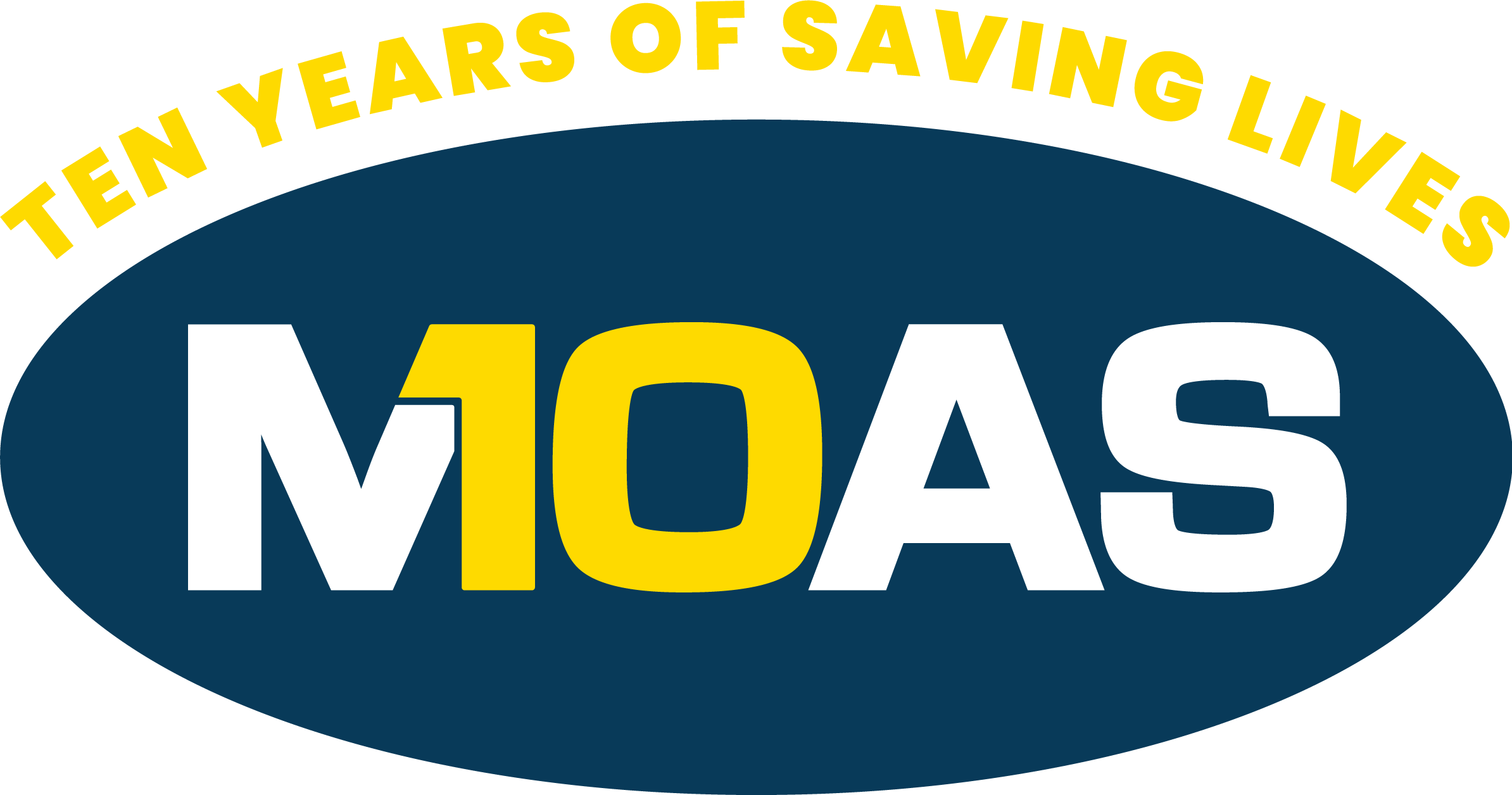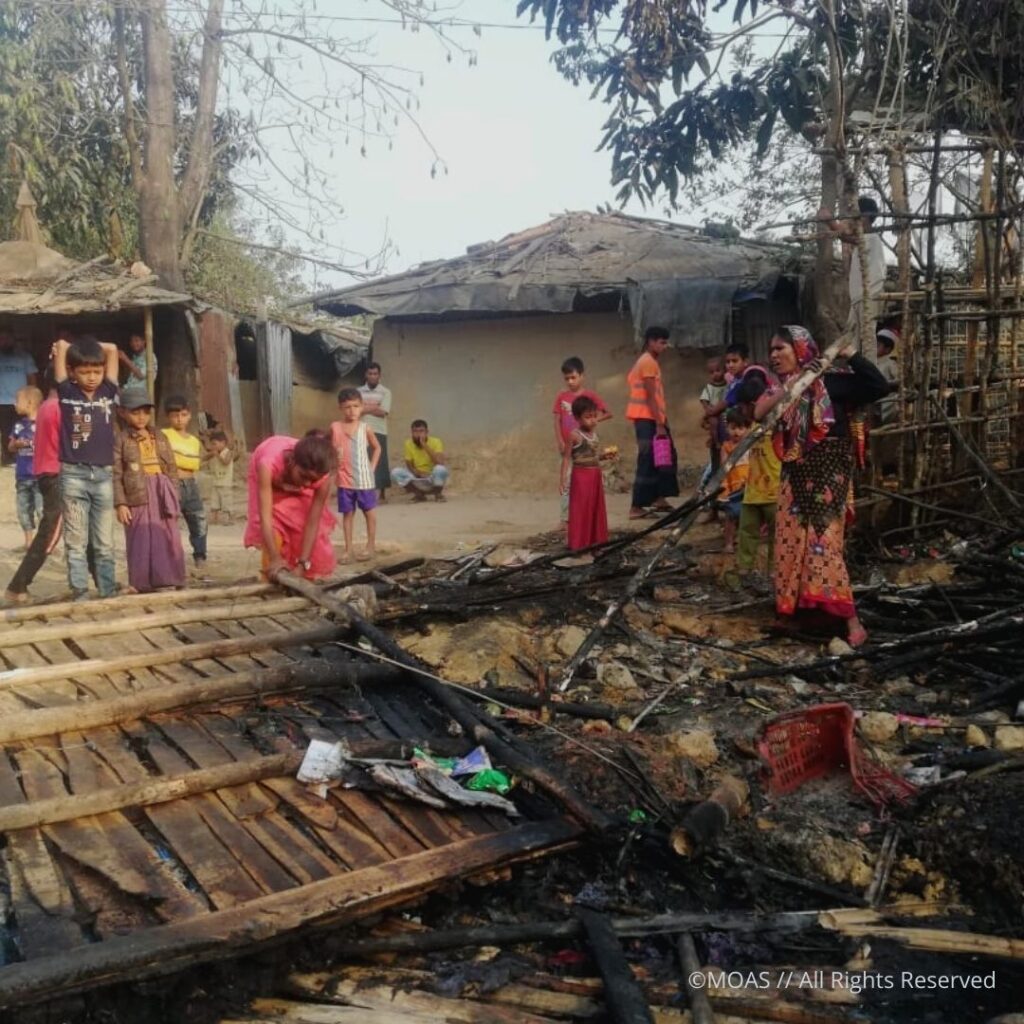MOAS: Welcome to our MOAS podcast. Today we are speaking with Paul about the importance of disaster risk reduction and fire preparedness in the refugee camps in Bangladesh. Paul is MOAS’ program coordinator and technical advisor in Bangladesh, and he oversees the implementation of fire safety and water and food safety training in the district of Cox’s Bazar, the world’s largest refugee settlement that is hosting more than 800,000 Rohingya refugees. First of all, we would just like a short introduction about Disaster Risk Reduction and why it is important. What are some of the major trends in terms of disaster risk currently?
Paul: With disaster risk reduction or DRR, as it’s sometimes called – the main focus of DRR is to reduce the damage caused by natural hazards, such as earthquakes, floods, cyclones, monsoons primarily through prevention, and typically that prevention is hard engineering solutions, such as building stronger retaining walls to rivers or flood channels or culverts to move water or it could be through training individuals to be better prepared for a natural disaster. Our focus has been a little bit different in that we have switched slightly to a more disaster response framework where we’ve trained people to respond safely to the disaster – be that flooding or more recently fire. We believe this is building an increased resilience within not only the refugee population, but also the host community of Cox’s Bazar, where we’re currently working.
MOAS: Fire has caused widespread destruction and has cost the lives of many over the last three years in the refugee camps. Can you explain what the fire risks are in the Rohingya camps, and how they can be mitigated?
Paul: So I think fire hazards within refugee settlements are universal. It’s not just a risk that Rohingya refugees are exposed to, it’s a risk that all refugees are exposed to- it is probably the one universal risk. Regardless of where they are in the world, where the refugee settlement is in the world, fire is a universal risk – be that Greece, be that Cox’s Bazar, or be that wherever, they’re all at risk of fire. It’s an incredibly unique risk. Typically, a fire that happens in a structure is contained by that structure. If we think about the houses that we live in and the offices that we work in, the actual physical structure of the building – the concrete in the brick, does not burn. The issue with most refugee settlements is the walls, the roof, as well as everything in the building is consumed by the fire and adds to the fuel load of that fire. So it’s a very, very unique fire environment.
MOAS: Thank you for your answer. What are the difficulties that firefighters face in refugee camps?
Paul: So we need to remember that the first firefighters who arrive at a fire in a refugee camp are often the refugees themselves and they will respond typically with fire extinguishers or buckets of sand and water. Now, while this will work, and this is efficient in the very, very early stages of a fire, once the fire starts to consume the walls and the roof of the shelter, the speed of development is very, very quick and often overwhelms the use of fire extinguishers and buckets of sand. So typically what this means is for a fire extinguisher or a bucket of sand to be very, very effective – you need to be very, very close to that fire to discharge that firefighting medium. The heat that’s produced within refugee settlement fires from the burning bamboo, the burning tarpaulin and the burning plastic is immense and it’s often this heat that stops the refugees getting near to the fire. Typically what we’ve witnessed in Cox’s Bazar in Bangladesh, the fires behave in a similar way to a wildfire, so it’s a shift in tactics that is needed on the part of firefighters to respond to a wildfire over a structural fire.
MOAS: And how can this kind of risk be mitigated and how can fire mortality be reduced?
Paul: To mitigate the risk of fire within a refugee settlement, it’s incredibly difficult. Typically, whether we look globally or whether we look in Cox’s Bazar, LPG or open fires are used for cooking. Refugees are put up in tents in some places around the world, which very easily catch fire. The materials used in Bangladesh are typically bamboo and tarpaulin. Again, these catch fire easily, but are also materials with which the refugees are very comfortable building shelters with as they have confidence in their ability to construct a strong stable shelter. There is work being done to look at flame retardancy with regards to tarpaulins, however, this is very much in its infancy. Well-planned refugee settlements should include firebreaks, which are probably one of the most effective ways of of limiting the spread of fire. But we need to remember that the majority of the settlements in Cox’s Bazar in Bangladesh are improvised as refugees fled from Myanmar during the influx, they found a bit of ground and they built their shelters there. So, I don’t think we can reduce the vulnerability too much. What we can do, is further develop projects to support some of this work, so we can look at developing personal protective equipment for the refugee firefighters, especially for women, safety volunteers in the camps here who typically would respond in a burqa. So we should look at how we can make them safer when they respond to support the community, we can look at developing a fire risk index, which would warn people and alert people as to the risk of fires within refugee settlements. There’s a number of possible things that we can do to reduce the risk of harm, but I think the universal threat of fire would still remain.
MOAS: Now the MOAS project is very unique. Can you explain how and why it will be considered the world’s first of its kind in addressing fire risk in refugee settlements? And what are the benefits offered by the prototypes developed through MOAS’ expertise?
Paul: We’ve been very lucky in terms of the project, we’ve been able to bring some skills to the table and some background knowledge. Through discussions with various UN partners, including the World Food Program, and the UN SMAP, which is the site maintenance and engineering project in Cox’s Bazar, we’ve looked at how we can better improve fire safety within the refugee settlements. We’re primarily focusing on a more robust response that can be scaled up a lot quicker. The response looks at once a fire has developed and once a fire has established, how we can better respond to that before the fire service arrives. Typically, for many years, humanitarian organisations have simply provided fire extinguishers or buckets of sand to refugee settlements. And what we need to remember is these refugee settlements, especially in Cox’s Bazar, it’s a city of almost a million people. They have all the issues that small towns and small cities have – including fire risk, however, that fire risk is incredibly unique. The work that we’ve done looks at utilizing primarily water as a firefighting medium, and being able to deliver large quantities of water as quickly and efficiently as possible through small pumps, through portable pumps, and hoses. The refugees who will be using this equipment do not need to stand four or five feet away from the fire but can stand 30, 40, 50 feet away from the fire where they are also safer as well. The benefit is it’s improving the resources, the equipment, and actually it’s also improving refugee safety. Because, we’re not asking them to commit to standing within five feet of a blazing house which may have a gas cylinder or bottles of kerosene inside, which may have other flammable agents.
MOAS: And finally, besides fire, what else is MOAS doing in Bangladesh for disaster risk reduction?
Paul: Besides the fire project, which is somewhat of a new direction for us, since 2019, we’ve been working in flood response. So initially, it started with training refugees, to be able to better respond to a flood, the idea being so we could provide them with water safety skills and basic rescue skills that are recognized globally. This meant they could evacuate the elderly, they could evacuate disabled people to places of safety. This grew and is now recognized by the government of Bangladesh as valuable training for the Cyclone Preparedness Program, which is a national organization of over 100,000 volunteers, so we’re working closely with them to support training for host community volunteers, as well as refugees. We’ve tried very hard to localize our supply chains as much as possible. Where we haven’t been able to find the right piece of equipment that we need we’ve been resourceful. With the water rescue throw bags, for instance, we set up a small workshop where we actually manufacture our own equipment, to our own standards so that we know that what we are providing to the refugees and the host community is of a standard that we would be prepared to use in Europe or the US.
MOAS: I’d like to say thank you, Paul, for speaking with us today. Thank you once again for taking the time to discuss the importance of fire prevention in the camps. It’s been such an informative conversation, and I really hope the listeners have learnt something new about our projects in Bangladesh.
Listen to our podcast here: https://audioboom.com/dashboard/4915528

